I am writing this on the 5th of June 2024, the eve of the 80th Anniversary of what has become known as D-Day. It was officially called Operation Overlord and should have been on the 5th of June, but poor weather conditions delayed it for a day (how very British). Ultimately, the D-Day Invasion did lead to Normandy’s liberation and the final defeat of Nazi Germany.
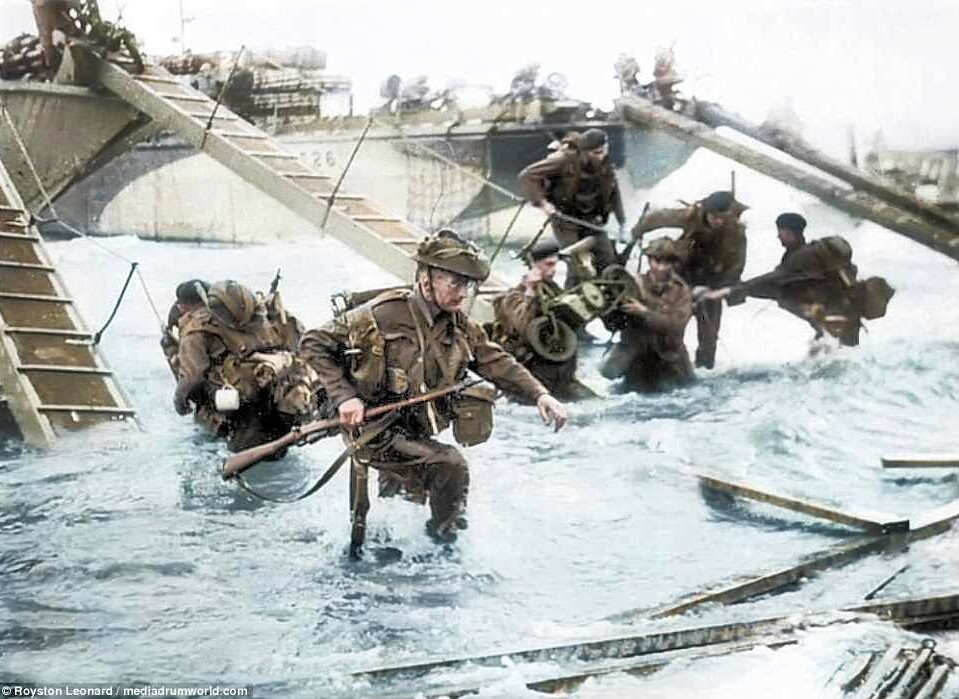
As such, it was a crucial turning point in World War II, D-Day and resonates today as it led to the end of Nazi tyrannical control over much of Europe. D-Day was the largest seaborne invasion in history, but it was not just about a single day of battle; it was also about the months of planning and build-up and then the breakout from the beachhead.
Planning and Preparation Prevent Poor Performance
In the months leading up to June 6, 1944, the Allies meticulously planned the invasion of Normandy. They implemented an intricate deception plan to make the Germans believe the invasion would be elsewhere. This plan, Operation Fortitude, included a fake army under the command of General George Patton. This included inflatable planes and tanks and soldiers having fake radio communications. The Allies knew the Germans were listening to their radio traffic and that they believed Patton was the Allies’ best general. The fake equipment backed up the subterfuge when German planes flew overhead. This was so successful that Hitler and many of his generals believed that the real invasion was a fake!
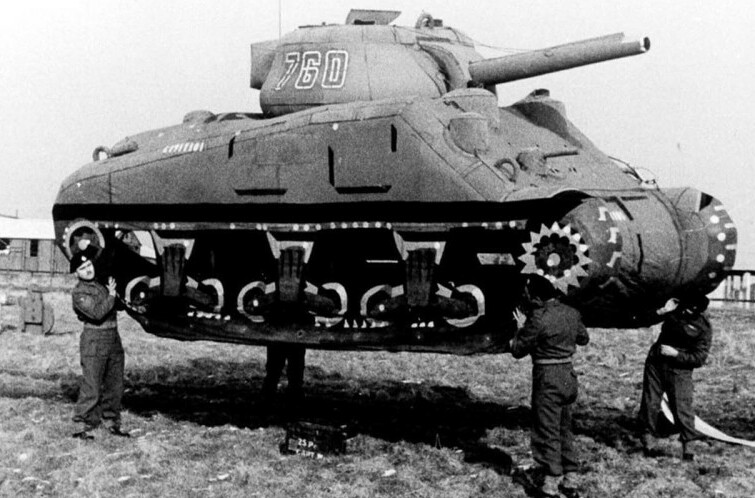
On the day itself, the 617 Squadron, made famous by their Dam Buster’s raid, demonstrated their precision flying skills once more by dropping ‘Window’, known now as chaff, to confuse German radar into believing that the invasion fleet was crossing over the narrowest part of the English Channel to attack the Pas de Calais. This level of planning was crucial because the Allies needed to secure a foothold in Normandy to push German forces back and reclaim occupied territories.
The strategy of orchestrating D-Day was massive and complex, encompassing air, sea, and land components. It involved thousands of ships, aircraft, and personnel from multiple Allied nations, including the United States, United Kingdom, Canada, and Free French Forces. The coordination of all these factors was paramount for the operation’s success and is in remarkable contrast to the German strategy to defeat the invasion.
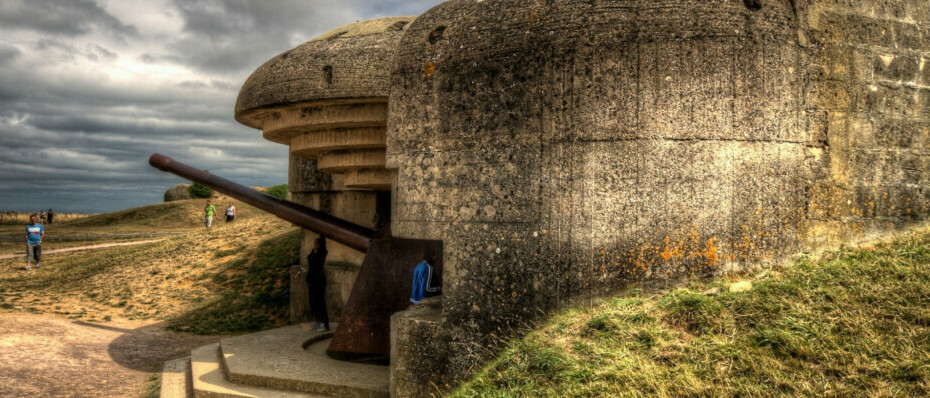
Germany had fortified Western Europe’s coastal areas with an extensive system of bunkers, landmines, and beach and water obstacles. This Atlantic Wall was envisioned to make an invasion nearly impossible, but in June 1944, it was not finished.
As we delve into the details of that historic day, you’ll learn about the sheer scale of the operation, the strategies employed, and the heroism of those involved. D-Day’s legacy is not only etched into the annals of military history but also into the very fabric of the nations whose freedoms were fought for on those beaches.
The Historic Assault: D-Day’s Unfolding
D-Day, 6th of June, 1944, marks a pivotal moment in World War II. The day soon after midnight, with the largest airborne assault in history up to that point. Two American Airborne Divisions, The 82nd and the 101st, were dropped on the right flank or to the west of the invasion beaches.
 The 6th British Airborne Division was dropped on the left flank or east of the beaches.
The 6th British Airborne Division was dropped on the left flank or east of the beaches.
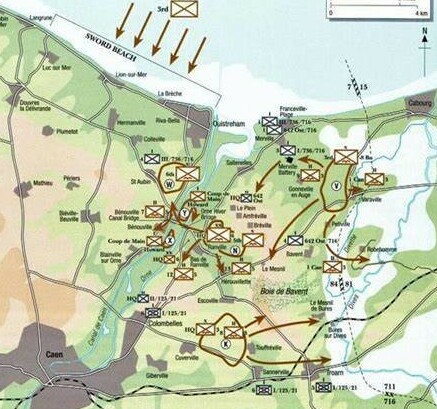
Their job was to secure these flanks from the inevitable German counter-attacks.
At around dawn, the largest seaborne invasion in history began. Five beaches were attacked: from west to east, Utah Beach and Omaha Beach were both assaulted by US forces. Gold Beach was attacked by British forces, Juno by Canadian forces, and Sword Beach by the British. As the sun rose over the English Channel, over 156,000 Allied troops were ready to storm the shores of Normandy.
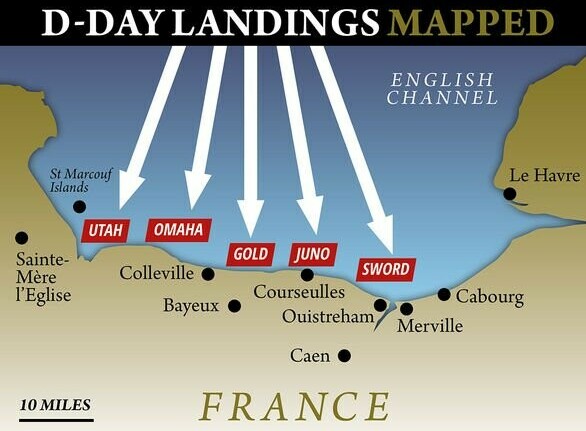
The courage displayed by the first soldiers who set foot on the heavily fortified beaches was nothing short of extraordinary. These men faced a deluge of gunfire, yet they pressed on, determined to secure a foothold in Nazi-occupied France. The obstacles they overcame were formidable: from navigating mine-studded waters to scaling sheer cliff faces under heavy enemy fire.
The price of the assault was steep. D-Day was marked not only by strategic advancements but also by a kaleidoscope of human stories. From individual acts of bravery that garnered medals to the tragic loss of life, the day was etched in the annals of history. Soberly, we recognise that thousands of soldiers laid down their lives, with many more wounded, ensuring that the foothold they gained wasn’t lost to German counterattacks.
We honour the immense sacrifices as we recount the events that transpired from the initial landings to securing the beaches by nightfall. The following section will delve deeper into the immediate aftermath of this day, exploring its implications for the progression of World War II, for the people of Normandy and the world.
Aftermath of Invasion: An Inflection Point in the War
The abrupt crescendo of D-Day didn’t fade with the setting sun. Its aftershocks echoed through the theatres of World War II, reshaping the conflict’s direction. Despite losses, the Allied forces had secured a fragile but expanding foothold in Continental Europe in the immediate wake of the invasion. Now let’s take a look at the immediate outcomes, the liberation of Normandy and how D-Day signalled the prelude to Nazi Germany’s downfall.
The days following the invasion saw a gradual movement as Allied troops began liberating town after town. Happy French civilians greeted their liberators, a poignant reminder that the harrowing day brought more than a military victory; it renewed hope for freedom. The securing of Normandy opened critical supply lines, allowing the successful transport of additional troops and supplies, which would become critical in the ensuing push across Europe.
Strategically, D-Day marked more than just a beachhead; it was the beginning of the end for Hitler’s regime. The successful landing put the German forces on the defensive and forced them to fight a two-front war that would strain their resources and morale. The substantial weakening of Germany’s stronghold in France paved the way for further Allied advances, culminating in the eventual liberation of Paris and the final surrender of Nazi forces. Eleven months later, with Berlin nearly destroyed, Hitler committed suicide, and Nazi Germany surrendered to the Allies.
As we reflect on the sacrifice made during those crucial hours of D-Day and the months that followed, it is important to continue to honour the valour of those who fought, many of whom made the ultimate sacrifice. As the coverage today and in days to come will demonstrate, the number of participants still alive has dwindled, and this anniversary is probably the last major milestone where survivors will be present.
Preserving this slice of history is vital—not only through monuments and museums but also through the continued education of future generations. Remembering the challenges and victories of D-Day serves as a compass for understanding the price of peace and the ongoing pursuit of democratic values.
Legacy of D-Day: Reflections on Sacrifice and Freedom
When you think about D-Day, it’s not just another date on the calendar. The legacy of that day in 1944 continues to resonate in our collective consciousness, reminding us of the colossal effort that liberated Europe from the grips of tyranny.
Movies, books, and TV series often depict the raw intensity of that day; these cultural portrayals help to cement the memory of what unfolded on those beaches in the minds of millions.
Few who have seen it can forget the first twenty minutes of Saving Private Ryan or the epic scope of The Longest Day. More recently (well, 20 years ago), Band of Brothers depicted the actions of Easy Company of the 506th Battalion of the 101st Airborne Division in its first two episodes.
Hundreds of books have been written about many aspects of D-Day, from Cornelius Ryan’s epic The Longest Day, on which the film is based, to John Keegan’s Six Armies in Normandy. More recently, a new generation of historians has looked at it with new perspectives. Peter Caddick-Adams does so in Sand & Steel, and James Holland does so in Normandy ’44.
James Holland and his co-commander Al Murray have produced a series of episodes on their podcast, We Have Ways, about many aspects of the campaign. They have also walked the ground of the battle. These are well worth a listen.
Cheers for having a read
BigT
Here is a selection of books and other media worth looking at if you want to find out about the rest of the iceberg, only the tip of which I have covered here.
(As an Amazon Associate I earn from qualifying purchases)
Books
The Longest Day – Cornelius Ryan
Six Armies in Normandy – John Keegan
Decision in Normandy – Carlo D’Este
Films and TV
Pods and YouTube
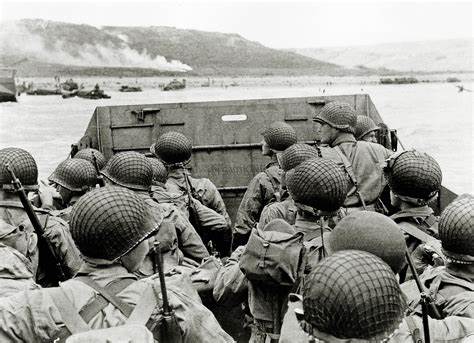
Thank you T. I was absorbed to the last word as usual.
Thank you Mr D